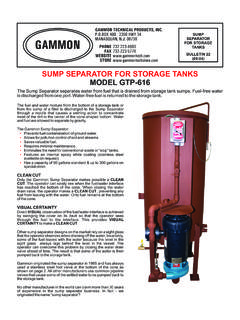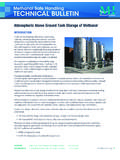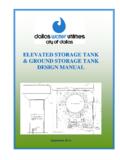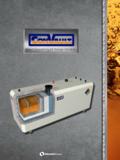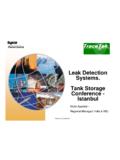Transcription of ESD User Handbook - Workstations, Cabinets & Storage ...
1 Avoid damaging the ESD laminates and paints in any way with sharp objects. Damaged, or irregularly maintained ESD protected work surfaces can lead to loss of ESD. protection. Keep non-conductors and unnecessary materi- als away from an ESD protected environment. Ensure that all users of the ESD working envi- ronment are aware of the necessity to observe the company's ESD control standards. ESD. Correct assembly, operation, care, and user Handbook maintenance of the ESD workstation are essential for ESD compatibility. The customer is responsible for the ESD. compatibility of all installations. Do not store, transport, or handle static sensi- tive components unless in an ESD safe envi- ronment.
2 Always wear a wrist strap or other personal grounding device when working at an ESD. protected area. If you are missing any of the assembly instruc- tions listed in this guide, please visit our website at: and search for assembly instructions . Table of Contents What is ESD? Electrostatic Discharge (ESD) is a natural occurrence in which electricity is passed through our body, or other conductor, and discharges onto some object. For Definition of example, the shock we feel when we touch a doorknob is an ESD. This natural Definition of occurrence is becoming a very hot topic in the field of electronics assembly due to the costly damage ESDs can cause to sensitive electronic equipment.
3 Care and What can a company do to Testing prevent ESD Damage? Isolation FAQ' A priority for any company with ESD. concerns should be to implement an ESD. program and appoint an ESD Coordinator. Cabinet For assistance with the development of an ESD Control Program, refer to the Workbench ANSI/ESD standard It would be the objective of this program to reduce the potential for ESD related damage. One of Workbench the ways to do this is to carefully select and maintain the workstation. The costs associated with ESD damage far out weigh the capital investment needed to provide an ESD protected workstation. What are the Resistivity Ranges?
4 Conductive: Low resistance; carries electric charge quickly. 5. < 10 / square Dissipative: The increased resistance slows the transfer of charge from one point to another, offering increased protection during ESD events. 5 12. 10 and < 10 / square Insulative: High resistance; does not con- duct electric charges well. 12. 10 / square Page 2. Definition of Symbols Earth ground : Connection to earth to establish zero potential (voltage) using ground cord part number GCT. Common ground Point: Point on the worksurface that is connected to earth ground . Definition of Terms Wrist straps (WS): Provides an electrical connection between the wearer's skin and the ground .
5 Wrist straps keep the wearer at a low electrical potential at all times. Wrist straps are one of the most important steps in ESD control, solving 75-80% of all static control problems. ground Cord Top (GCT): This is the main ground cord for workbench applications. This hardware connects a common ground point (Static Dissipative Top) to the earth ground . Kit includes a brass stud with hardware, and a 9 foot cord with a 1M resistor. ground Cord Shelf (GCS): This hardware connects accessories (shelves, Cabinets ) to the established common ground point. Kit includes a brass stud with hardware, and a 9 foot cord without resistor.
6 Resistor: Located on the ground Cord Top (GCT) and the Wrist Strap (WS), acts as a fuse between the operator and ground . ONLY USE THE ground CORD WITH RESISTOR (GCT). BETWEEN THE EARTH ground AND THE COMMON ground POINT. ground Loop: This occurs when there are more than one ground attached to an ESD protected 6. workbench. The primary ground cord (GCT) has a 10 resistor in line to ground . If a ground cord (similar to the third wire on most electrical components) is used, there is no resistor, and this is an easier path to ground . This is not desired, and should be avoided. Page 3. Specifications ESD Paint: Entirely covers workbench accessories, the cabinet housing and drawers of a cabinet if specified.
7 The ESD painted drawers will transmit the charge through bearings and the drawer track to the grounded cabinet. Surface Resistance: 105 - 109 (measured at 100V). Static Dissipative (SD) Tops and Shelves: Contain a carbon scrim dissipative layer which conducts the charge away from the workbench. Point to Point Resistance, per EOS/ESD - : At 40-60% RH*: 106 - 107 . At 20-40% RH*: 107 - 108 . At 10-20% RH*: 108 - 109 . Point to ground Resistance, per EOS/ESD - At 40-60% RH*: 106 - 107 . At 20-40% RH*: 107 - 108 . At 10-40% RH*: 108 - 109 . Static Decay Rate: per FMTS 101C, method 4046: At 50% RH*: seconds At 10% RH*: seconds (* Relative Humidity).
8 Conductive Plastic Insert Boxes and Slotted Grooved Trays: Conductive boxes are molded from a permanently conductive high impact polystyrene compound (PS-723), to provide protection from electrostatic discharge. Surface Resistivity: 200 /square Care and Use y Avoid damaging ESD laminates and paint with sharp objects. This can affect the ESD. protective properties. y All ESD protected areas require regular care and maintenance, as well as checks and inspections. These are on going user responsibilities. y Damaged ESD work surfaces can lead to loss of ESD protection. y Check all ESD installations regularly for damage, wear and tear.
9 Failure to do so may result in loss of ESD protection. y Check the ESD workstation's protection characteristics frequently. See your ESD. Coordinator for further information. y Clean all surfaces periodically, using a plain cotton rag with a good ammoniated detergent. Dust and dirt may cause conditions that cause electrostatic discharge. y Do not use cleaning materials containing wax or aggressive solvents that may modify the electrical properties of the work surface. y Do not use brushes or other abrasive cleaning implements. Page 4. Testing Methods Electrostatic dissipative workstation resistance properties are measured using a Megohmmeter.
10 ESD Association standard recommends using a measuring apparatus capable of delivering 10 ( 1) volts and 100 ( 10) volts using two 5 pound electrodes. Resistance to ground (or Point to Point Resistance (or Groundable Point) measures the Surface Resistance) is the resistance total resistance between the surface measured between two points on a through the ground cord. According static control surface. According to to EOS/ESD - , resistance to EOS/ESD - , using the apparatus ground should be measured using the listed above, the electrodes should be apparatus listed above with one spaced ten inches apart and at least electrode placed on the surface and two inches from the edge of the the other terminal connected to a surface.


